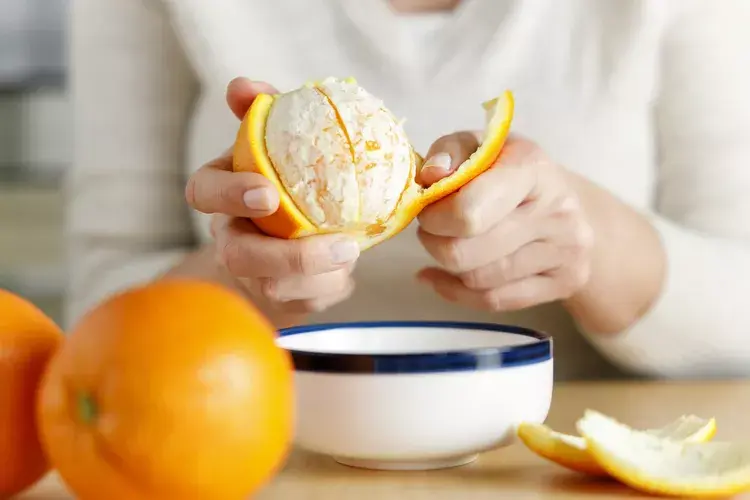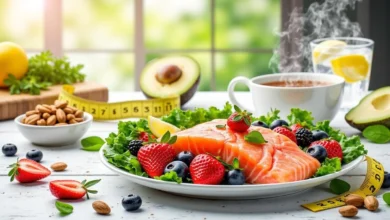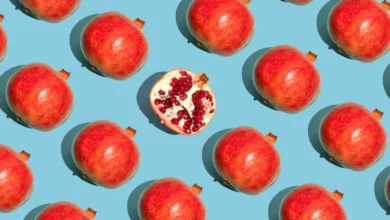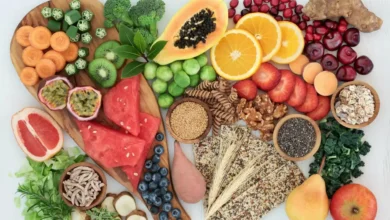Why Some Foods Have More Vitamin C Than an Orange
foods with more vitamin C than an orange

Understanding Vitamin C Beyond Citrus
Most people immediately think of oranges when they hear “vitamin C,” but many other fruits and vegetables contain even higher levels of this essential nutrient. These foods not only provide a stronger vitamin C boost but also offer additional antioxidants, fiber, and minerals that support immunity, skin health, and energy.
READ ALSO:
- Quick Exercise for Lower Back Pain Relief: Simple Moves That Work
- Does Running Help You Lose Weight? How to Start and Progress Without Losing Your Breath
Follow our PAGE
Foods That Contain More Vitamin C Than an Orange
Red Bell Peppers
Red bell peppers are one of the richest vitamin C sources. One cup can surpass the vitamin C content of an orange by a wide margin. They are also loaded with vitamin A and beneficial plant compounds that support vision and immune health.
Guava
Guava is a tropical fruit known for its intense flavor and high nutrient profile. A single guava can deliver more vitamin C than most citrus fruits. It also provides fiber and antioxidants that help reduce oxidative stress.
Strawberries
Strawberries offer a powerful combination of vitamin C and phytonutrients. A cup can easily exceed the vitamin C amount found in a typical orange, making them ideal for skin, immunity, and energy levels.
Mango
Mangoes are not just sweet and refreshing — they are also naturally high in vitamin C. Eating a whole mango can contribute a significant portion of your daily vitamin C needs.
Green Chili Peppers
Green chilies might surprise you. They are extremely rich in vitamin C and can elevate the nutrient profile of many dishes with just a small amount.
Papaya
A cup of papaya provides a notable dose of vitamin C along with digestive enzymes, helping with gut health and nutrient absorption.
Kiwi
Kiwi fruit delivers a burst of vitamin C, fiber, and vitamin K. Its antioxidant-rich profile makes it excellent for skin and immune support.
Broccoli
Broccoli may not be the first food you think of for vitamin C, but raw broccoli contains levels comparable to citrus fruits. It also brings fiber, folate, and antioxidants.
Pineapple
Pineapple contains more vitamin C than many people expect. It’s a tropical option that also supports digestion due to its natural enzymes.
Brussels Sprouts
Brussels sprouts are nutrient-dense and offer a meaningful amount of vitamin C, especially when eaten lightly cooked or raw.
Why These Foods Matter for Your Health
Antioxidant Variety
Vitamin C works as a powerful antioxidant, but combining different sources gives your body a broader range of protective compounds. Many of these foods also contain polyphenols that support cellular repair and inflammation control.
Improved Immune Function
Vitamin C supports the immune system by enhancing white blood cell function, improving antioxidant defenses, and helping your body respond more efficiently to stress and infection.
Better Skin and Collagen Production
Your body cannot form collagen without vitamin C. High-vitamin C foods support skin firmness, elasticity, wound healing, and natural glow.
Enhanced Iron Absorption
Pairing vitamin C–rich foods with iron-rich meals increases iron absorption, which may help with energy levels and reduce tiredness.
How to Add These Foods to Your Routine
Fresh Options
- Add strawberries, kiwi, or papaya to smoothies or oatmeal
- Snack on guava or sliced mango
- Eat red bell peppers raw with hummus
- Add pineapple to fruit salads or yogurt bowls
Lightly Cooked Options
- Steam broccoli or Brussels sprouts to preserve vitamin C
- Stir-fry red bell peppers for a quick meal
- Add green chili peppers to soups or sautés
Creative Meal Ideas
- Make a tropical fruit bowl with mango, kiwi, and pineapple
- Prepare a roasted vegetable mix with red bell peppers and broccoli
- Add fresh strawberries to salads for color and antioxidant boost
- Blend papaya with lime for a refreshing drink
Things to Consider
Heat Reduces Vitamin C
Vitamin C is sensitive to heat, so eating raw or lightly cooked foods helps maximize intake.
Freshness Matters
The longer produce is stored, the more vitamin C it can lose. Try to consume fruits and vegetables soon after buying them.
Balance Is Key
You don’t have to eliminate oranges — variety ensures you get a full range of nutrients, not just vitamin C.
Final Thoughts
Oranges will always remain a symbol of vitamin C, but they are far from the most potent source. By including foods like red bell peppers, strawberries, guava, mango, and broccoli in your daily meals, you can naturally boost immunity, support healthy skin, and enhance your energy. These ingredients add flavor, color, and significant nutritional power to your diet — making it easier than ever to reach your daily vitamin C goals.

Hello! My name is Alan Teixeira and I am passionate about helping people live healthier, more balanced lives. From mindful eating to daily habits that promote physical and mental well-being, I believe that small, consistent changes can lead to powerful transformations.
I created this blog to share practical tips, reliable information, and thoughtful insights that can inspire you to take better care of yourself—with balance, mindfulness, and positivity.
If you are looking to improve your health, nourish your body, and build a lighter, more fulfilling routine, you are in the right place. Welcome!





